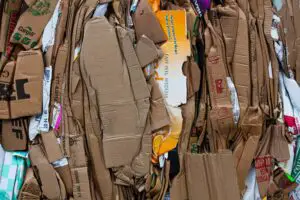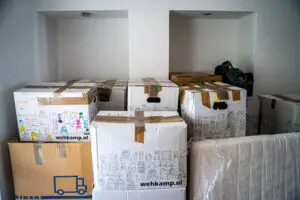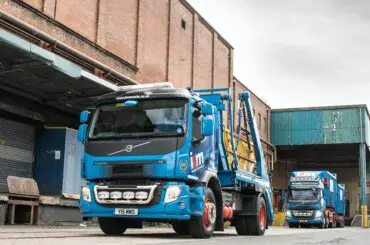Recycling plays a vital role in preserving our environment and mitigating the impact of waste on our planet. By diverting materials from landfills and reusing them in new products, recycling helps conserve natural resources, reduce energy consumption, and decrease greenhouse gas emissions. Among the many materials that can be recycled, cardboard stands out as a highly recyclable and versatile material.
Cardboard recycling is a crucial component of waste management systems worldwide. As one of the most commonly used packaging materials, cardboard represents a significant portion of the waste stream. Recycling cardboard gives it a new life, minimizing the need for virgin materials and reducing the strain on our ecosystems.
However, when it comes to cardboard recycling, tape removal is an often overlooked aspect that holds substantial importance. Many people wonder whether removing the tape from cardboard is necessary before recycling it. Surprisingly, the answer is a resounding “yes.” The significance of tape removal cannot be underestimated when it comes to ensuring the effectiveness of the cardboard recycling process. In the following sections, we will delve into why tape removal matters and how it contributes to a more sustainable approach to recycling.
Contents
Why Tape Removal Matters in Cardboard Recycling
Regarding recycling cardboard, tape removal holds significant importance due to several crucial factors affecting the overall recycling process.
1. Explanation of the recycling process for cardboard:
Cardboard recycling involves several stages: collection, sorting, shredding, pulping, and reforming into new products. Each step is designed to maximize the efficiency and quality of the recycled material. However, the tape can complicate this process.
2. Challenges posed by tape during the recycling process:
Tape on cardboard presents challenges at multiple stages of recycling. The adhesive properties of tape can cause issues during sorting, as it can stick to other recyclables and contaminate them. In addition, the presence of tape affects the efficiency of machinery used for shredding and pulping.
3. Machinery complications and maintenance issues caused by tape:
Tape can become entangled in the machinery at recycling facilities, leading to breakdowns, equipment damage, and costly repairs. The presence of tape can also slow down the processing speed, resulting in reduced efficiency and increased operational costs. Removing tape before recycling helps avoid these complications.
4. Contamination concerns and the impact on recycled cardboard quality:
During the pulping process, cardboard is transformed into pulp, which is then used to create new products. However, tape left on the cardboard can contaminate the recycled material. Adhesive residues and fibers from the tape mix compromise the quality of the recycled cardboard. This contamination may render the cardboard unsuitable for producing new high-quality cardboard or paper products.
Removing tape from cardboard before recycling can address these challenges and ensure a more efficient and sustainable recycling process. It helps prevent machinery complications, reduces maintenance costs, and improves the quality of recycled cardboard, resulting in a higher likelihood of producing valuable new products from recycled material.
Efficiency and Sustainability in Recycling
Efficiency and sustainability are two essential pillars of an effective recycling system. Regarding cardboard recycling, tape removal plays a significant role in maintaining these principles and promoting a greener approach to waste management.
1. The importance of maintaining recycling facility efficiency:
Recycling facilities rely on efficient processes to handle large volumes of recyclable materials. By removing tape from cardboard before recycling, we contribute to the overall efficiency of the facility. Tape-free cardboard is easier to sort, process, and transform into new products, reducing bottlenecks and optimizing recycling operations.
2. How to tape removal contributes to a smoother recycling process:
Removing tape from cardboard ensures a smoother recycling process at every step. Tape-free cardboard is less likely to get entangled with other materials during sorting, reducing sorting time and minimizing contamination risks. Additionally, tape-free cardboard can be shredded and pulped more efficiently, enhancing the productivity and throughput of recycling machinery.
3. Preserving resources through effective cardboard recycling:
Effective cardboard recycling plays a crucial role in resource conservation. By removing the tape, we contribute to producing high-quality recycled cardboard that can be used to create new packaging materials and paper products. This reduces the demand for virgin materials, such as trees, and helps conserve natural resources. Additionally, recycling cardboard saves energy and reduces greenhouse gas emissions compared to producing new cardboard from scratch.
4. The role of tape removal in promoting sustainable practices:
Tape removal aligns with the broader goal of promoting sustainable practices. By actively participating in tape removal before recycling, we reduce waste contamination, increase the value of recycled materials, and support the circular economy. This simple action helps minimize landfill waste, conserve resources, and reduce the environmental impact of cardboard production.
Practical Tips for Tape Removal
Removing tape from cardboard is a simple yet important step in preparing it for recycling. Here are some practical tips to ensure effective tape removal:
1. Step-by-step guide for removing tape from cardboard:
– Start by identifying the areas where the tape is attached to the cardboard.
– Gently grasp the end of the tape and begin peeling it off from one corner.
– Slowly and steadily peel the tape away, keeping it at a low angle to minimize tearing or residue.
2. Gentle peeling techniques to minimize residue:
– Apply slight pressure to the tape as you peel it off, ensuring a smooth and controlled motion.
– Be patient, especially with fragile or delicate cardboard, to avoid damaging the surface.
3. Using knives or scissors for more stubborn tape:
– If the tape is firmly stuck or leaves adhesive residue, you can use a knife or scissors to assist in removal.
– Carefully slide the blade under the edge of the tape and gently lift it, ensuring not to cut into the cardboard.
– Slowly work along the tape, using the blade to separate it from the surface.
4. Additional tips for removing adhesive residue:
– If adhesive residue remains on the cardboard after tape removal, you can try using a mild adhesive remover or rubbing alcohol.
– Apply a small amount of the remover or alcohol to a clean cloth or paper towel.
– Gently rub the affected area in circular motions to dissolve and remove the residue.
– Ensure the remover or alcohol does not saturate the cardboard to prevent damage.
5. Ensuring the cardboard is clean and free of non-cardboard materials:
– After removing the tape and residue, inspect the cardboard for non-cardboard materials, such as labels or stickers.
– Peel off or scrape away any non-cardboard elements to ensure the material is clean and ready for recycling.
– Removing non-cardboard materials helps prevent contamination during the recycling process.
By following these practical tips, you can effectively remove the tape from cardboard, minimize residue, and ensure the material is clean and free of non-recyclable elements. Your efforts in proper tape removal contribute to a more efficient and sustainable cardboard recycling process.
Understanding Local Recycling Guidelines
It’s crucial to be aware of and adhere to local recycling guidelines when it comes to recycling. This is especially true when recycling cardboard, as requirements may vary depending on your region.
1. The significance of regional recycling guidelines:
Each region or municipality may have specific guidelines and regulations for recycling. These guidelines are implemented to ensure effective waste management and promote sustainable recycling practices. Adhering to these guidelines helps streamline the recycling process and prevents contamination issues.
2. Variations in requirements for cardboard recycling:
Cardboard recycling requirements can differ from one area to another. Some regions may require tape removal, while others may have different specifications for cardboard preparation. Variations can also exist regarding acceptable sizes, shapes, and even the types of cardboard accepted for recycling. Understanding these variations is key to proper cardboard recycling.
3. Importance of checking local regulations and instructions:
To ensure that you are recycling cardboard correctly, it is essential to check your local recycling regulations and instructions. These guidelines may be available on your local municipality’s website or recycling program. Familiarize yourself with the specific requirements for cardboard recycling in your area to avoid non-compliance issues.
4. Contacting recycling programs or waste management companies for clarification:
If you have any doubts or need further clarification about cardboard recycling guidelines, consider contacting your local recycling program or waste management company. They can provide accurate and up-to-date information specific to your area. Contacting them will help ensure you follow the correct practices and contribute to a more efficient and effective recycling process.
You play an active role in responsible waste management by understanding and following local recycling guidelines. Adhering to the specific requirements for cardboard recycling in your region helps maintain recycling facility efficiency, prevents contamination, and supports sustainable recycling practices. Stay informed, check local regulations, and seek guidance when needed to ensure you recycle cardboard per your area’s guidelines.
Conclusion
In conclusion, tape removal is crucial in cardboard recycling and contributes to a more efficient and sustainable waste management system. By summarizing the key points discussed, we can highlight the significance of tape removal for cardboard recycling:
– Tape removal is essential because it ensures a smoother recycling process and helps maintain the efficiency of recycling facilities. Removing the tape reduces complications, prevents machinery breakdowns, and optimizes recycling operations.
– Furthermore, tape removal contributes to the production of high-quality recycled cardboard. By eliminating tape and adhesive residue, we help maintain the integrity of the recycled material, ensuring its suitability for creating new cardboard products. This emphasis on quality promotes a circular economy by maximizing the value of recycled materials.
– It is vital for individuals to actively participate in sustainable waste management practices, including proper tape removal. By removing tape from cardboard before recycling, we demonstrate our commitment to responsible waste management and environmental preservation. Small actions like tape removal collectively significantly impact reducing waste and conserving resources.
More Post :
Revolutionizing Recycling: The Highlands Recycling Center Ocala Leads the Green Movement in 2023





